The forest canopy resounded with the explosive whoosh of a large bird taking flight – actually two. One lit on a branch above my path, and another to the right. These barred owls, disturbed in the early morning, did not sound their usual call, but instead a hissing (Cornell Lab of Ornithology identifies these calls as from juveniles). The search for wildlife got off to a rousing start, and I did not have to leave my property for this encounter.
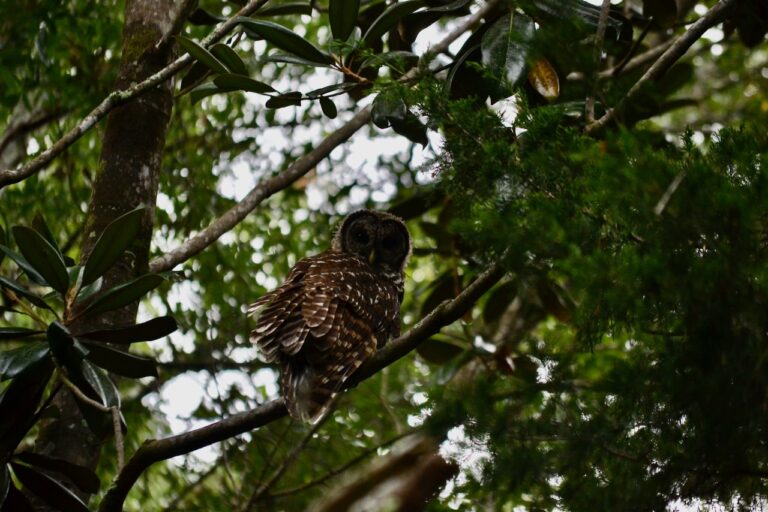
After launching my fifteen-foot Boston Whaler, my friend Ben Saunders arrived for our trip out to Bull Island. Ben and I had worked together years ago in inpatient psychiatry at MUSC. In his retirement Ben has become an avid photographer, and in the past month had made a photography trip to Yellowstone National Park. His photographs of grizzly bears and bison were spectacular – our wildlife photography subjects on the island would be more modest.
Ben had not visited the interior of the island in some time, and was not aware of the ability to land at the public dock. We got an early start, and passed the ferry on the way to arrive first at the dock, as was our plan.
On our walk by the picnic area, I asked Ben if he had ever seen fox squirrels, and his “no” was immediately followed by a sighting of one. Ben moved in for a closer photograph, though his long lens covered many of those intervening yards. I imagined him focusing on Yellowstone grizzlies as he captured images of this much smaller but also distinctive mammal.
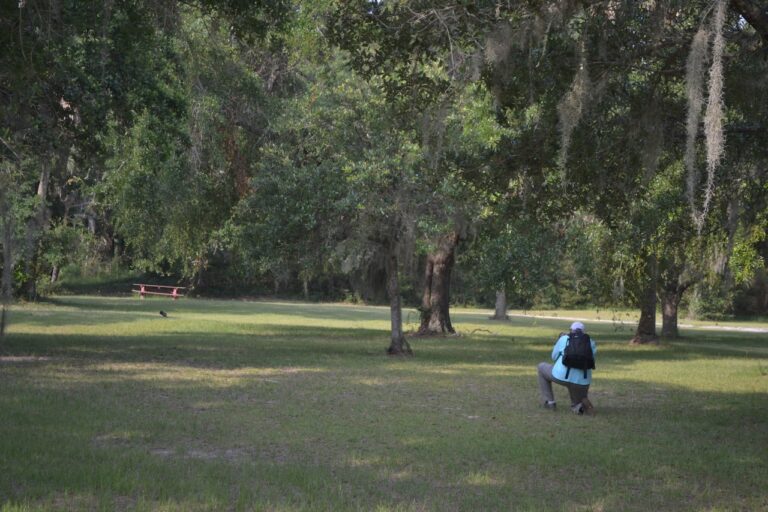
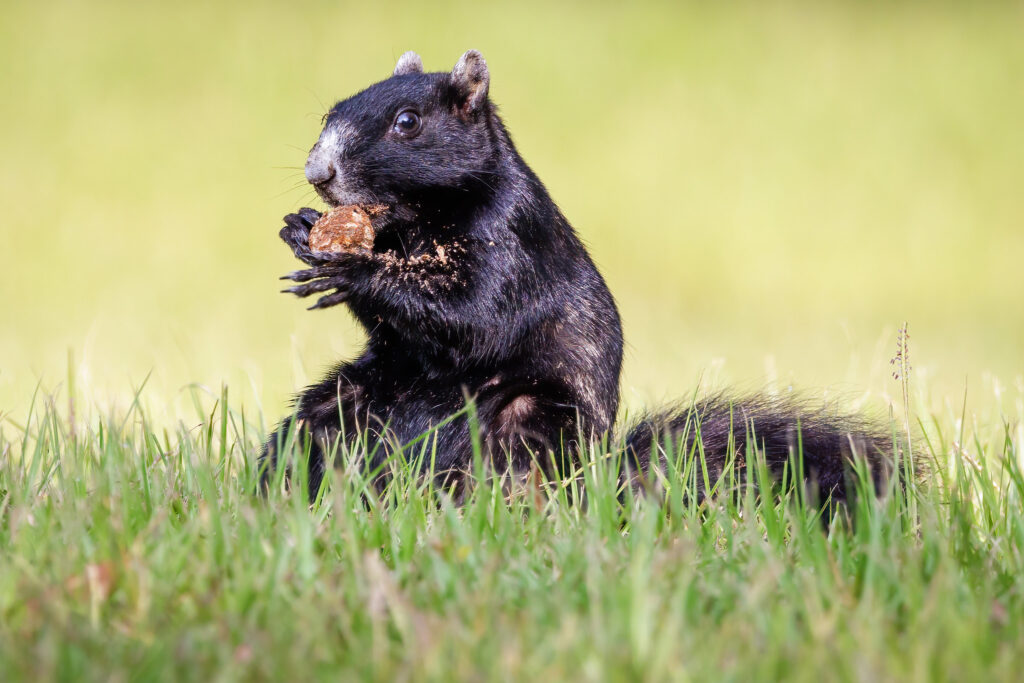
We continued our walk and catching up along the Beach Road, and made the ocean strand perhaps an hour before low tide. We had the beach all to ourselves until the first of the ferry passengers arrived, and three of those walkers caught up to us as we looked over the wooden vessel frame just south of the Boneyard. As we moved toward the Boneyard, a pair of ospreys flew over the ocean waters close to shore. In the distance the top of a dead tree in the intertidal zone held a clump of material, which on closer inspection appeared to be an osprey nest newly built since my last visit.
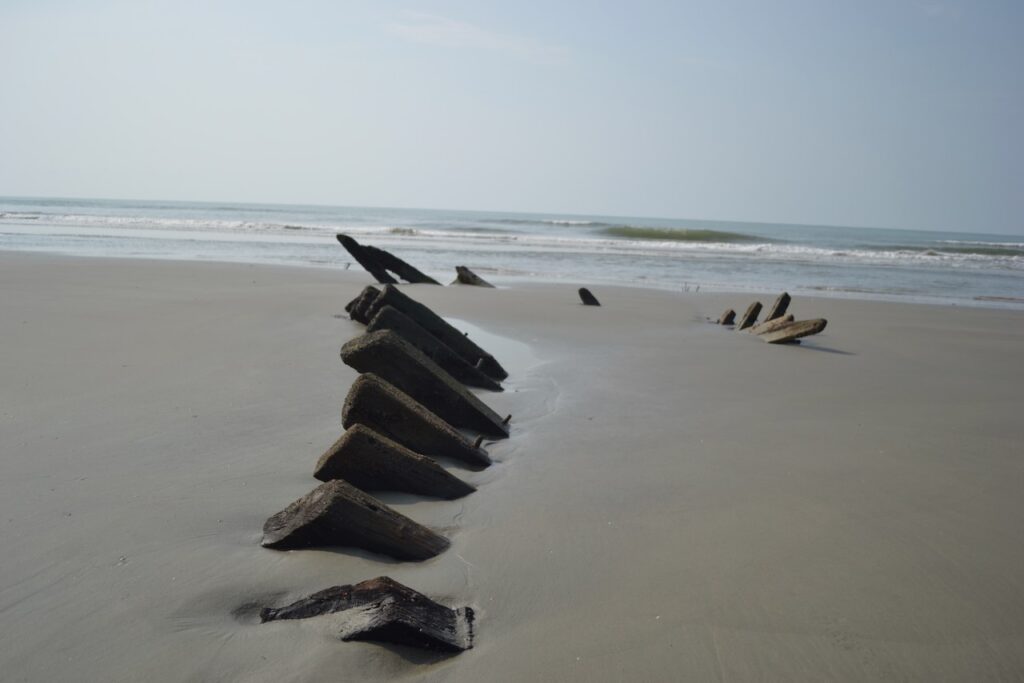
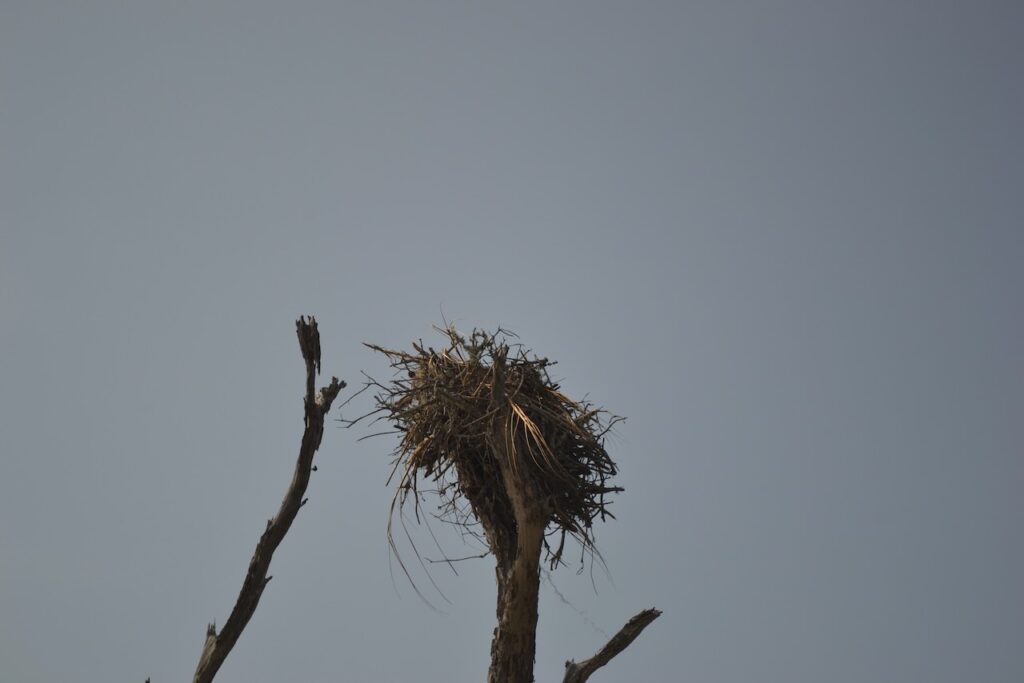
This skeleton forest is always a place of root study, and Ben was most interested in the exposed pine trees’ root structure. A pair caught our attention, and we noted the joining of the roots now revealed due to erosion.
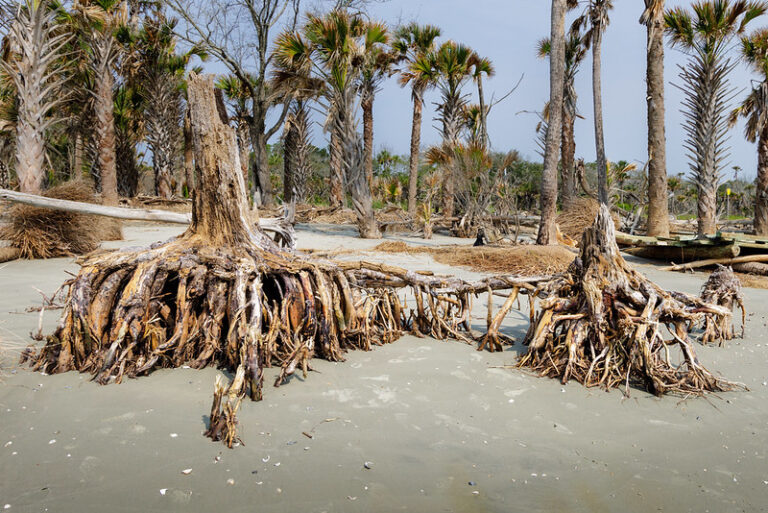
Past the Boneyard we climbed up on the dike leading us to the roadway around the Jacks Creek impoundment. From this vantage point we could look to the east to the beach and narrow wetland, and west to the impoundment waters and vast wetlands. A pairing of wood stork and roseate spoonbill flew from east to west in front of our path, and we wondered if we would see them again ahead.
The dike was dominated by dragonflies, and when we got to the intersection of the east dike and the cross-dike, a swarm of orange-red dragonflies hovered and circulated in the area. This particular dragonfly dominated this swarm, though we saw other species on our walk along the dikes. Many perched on the top of reeds, claiming their territory. We were relieved that these insects feasted on mosquitoes, and spared us.
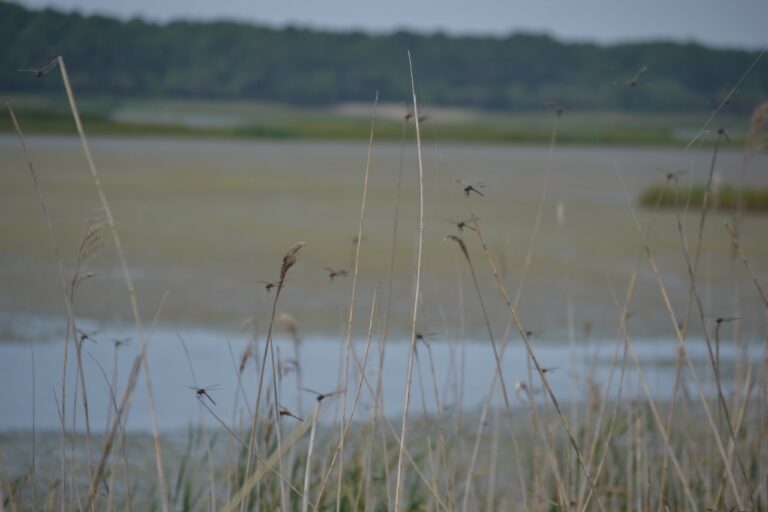
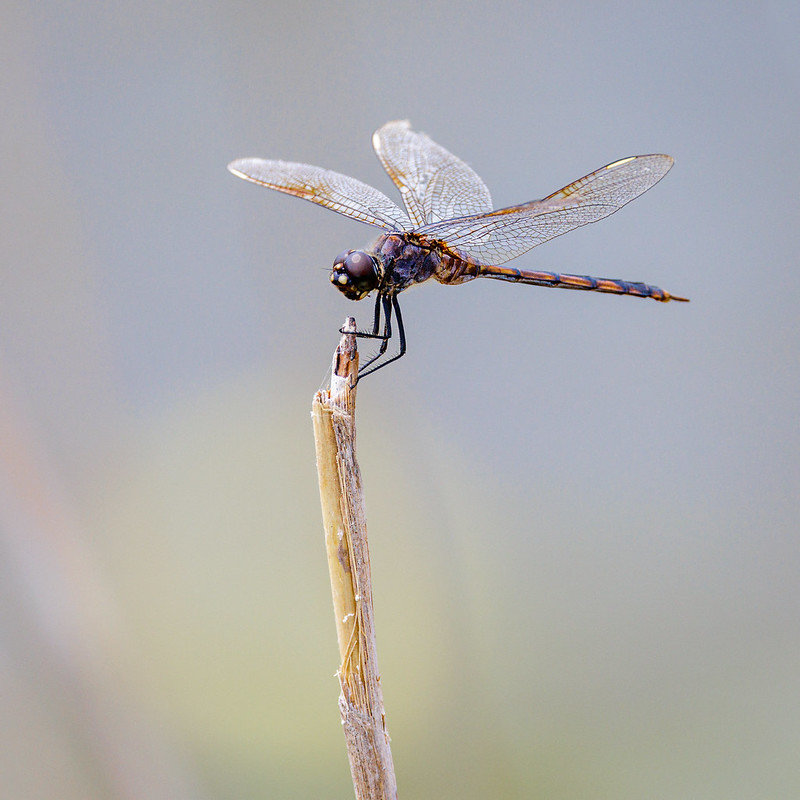
I had forgotten my plan of going for a cooling swim, so we continued the walk up the east dike until a section gave access to the beach, the same area where Hurricane Hugo breached this rim of Jacks Creek. Over a couple of decades I have watched the ocean’s high tides eat away at this place and the ongoing efforts to shore it up, including hardening with concrete bags, and currently a bulldozer adding material on the impoundment side of the dike.
Before reaching the bulldozer, we spotted not one but two spoonbills feeding in the wetland. From the perspective at the bulldozer, the group totaled six, and behind them were two black bellied whistling ducks. The charisma of spoonbills, their coloring and bills, attract the eye and camera lens, and we both were drawn to capturing images of these beautiful birds, now a common sight in the Lowcountry.
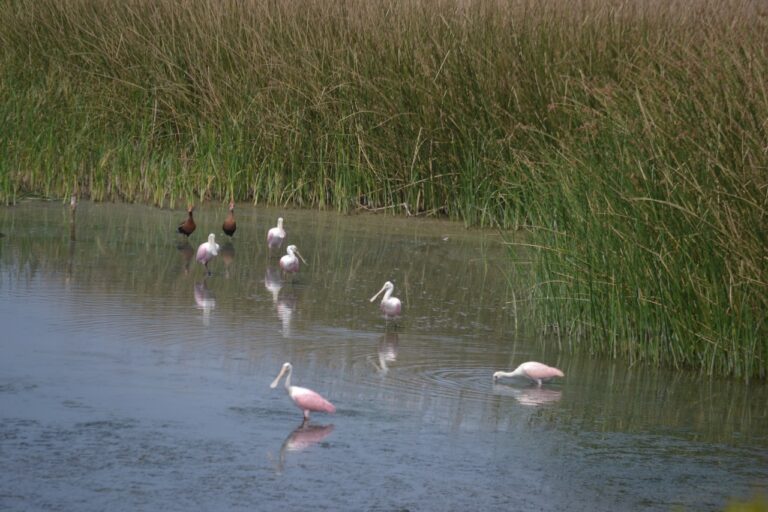
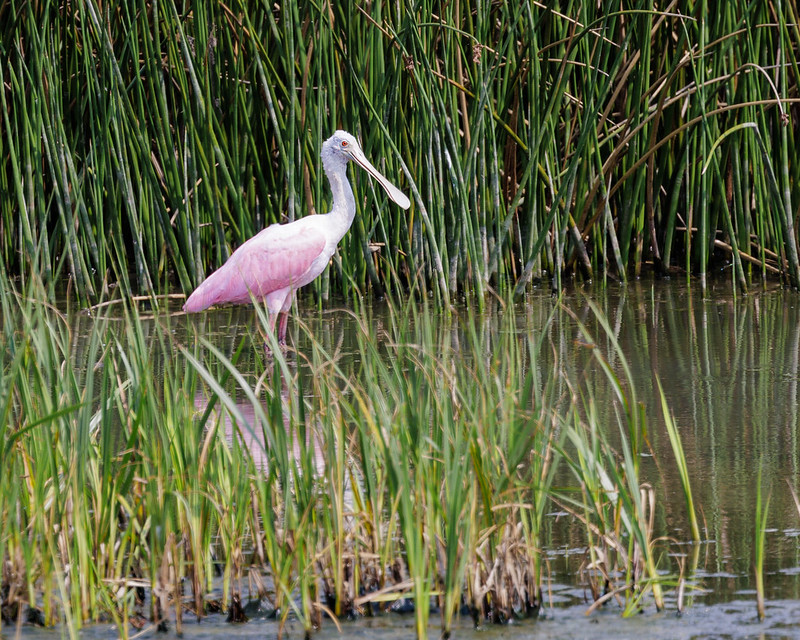
We retraced our steps to the cross-dike and made our way over Jacks Creek. The heat kept the alligators in the water, gliding along. At the “T” in the dike we turned toward the observation tower, and continue to observe birds and dragonflies, flying and perching everywhere. Ben wondered how one could walk along the dike when alligators were basking, and I planned to bring him back in the winter for one of those days.
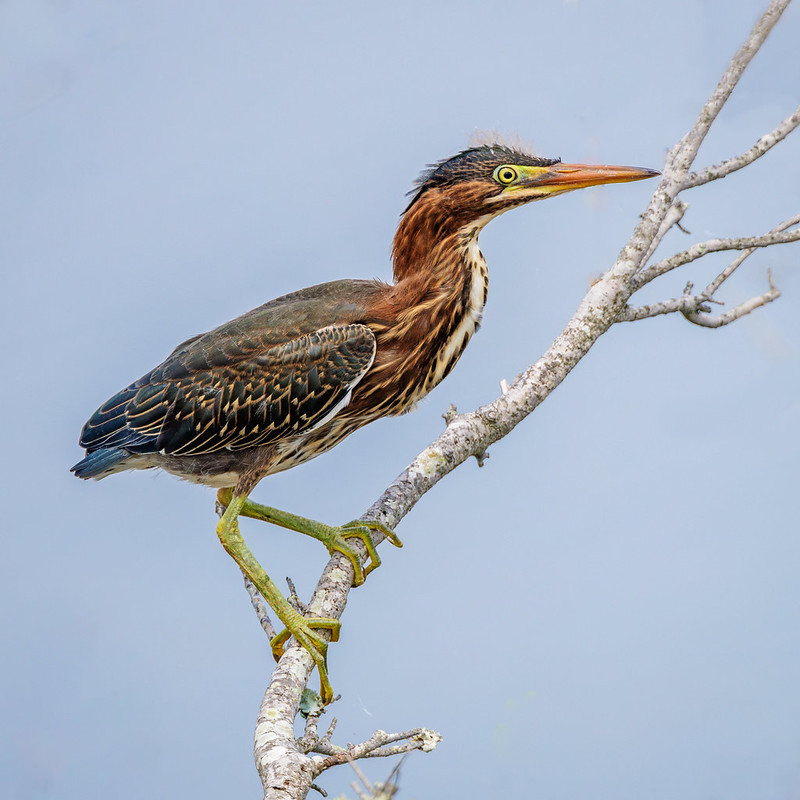
The final legs of our walk had a small smattering of mosquitoes and deer flies. Their relative absence was a relief, as was the relative moderate heat. Fox squirrels occasionally appeared ahead. After the last miles, we were glad to get underway in the boat and feel the “Mercury” wind. We took a different course on our way back to the landing – out Bull Creek on the back side of the island, and then across Bulls Bay to Anderson Creek. We had a last wildlife sighting as the salmon-colored head of a loggerhead turtle briefly surfaced prior to our leaving the refuge.
Terrific outing. Look forward to the next one.
Will definitely get out there for walking amongst the basking gators, if not before. And thanks again for sharing those photos.
WOW!! Photos by Ben are WONDERFUL. I’m glad you were able to show him the special creatures that make that special place their home. Stay cool is you can …
Quite a special place
Great fun and fabulous pictures!
It was fun, along with seeing our photos together afterward
Incredible phots to accompany Bob’s writing!!! Another book idea????
Contemplating several ideas for a future book project
Thanks for sharing your reunion exploration of the island with Ben. It has been a while since I visited……..time to correct that error😊. Keep the posts comin’!
Suich a great visit to Bulls Island! The photographs are outstanding! Thank you!
Never disappointed with visits there
Love seeing the beautiful whistling ducks up close and spoonbills. The fox squirrel was cool and dragonflies too.
Glad you keep a constant watch on that island. It’s an amazing place.
Will keep that watch
Thanks! Ben is indeed a gifted photographer!
Yes he is